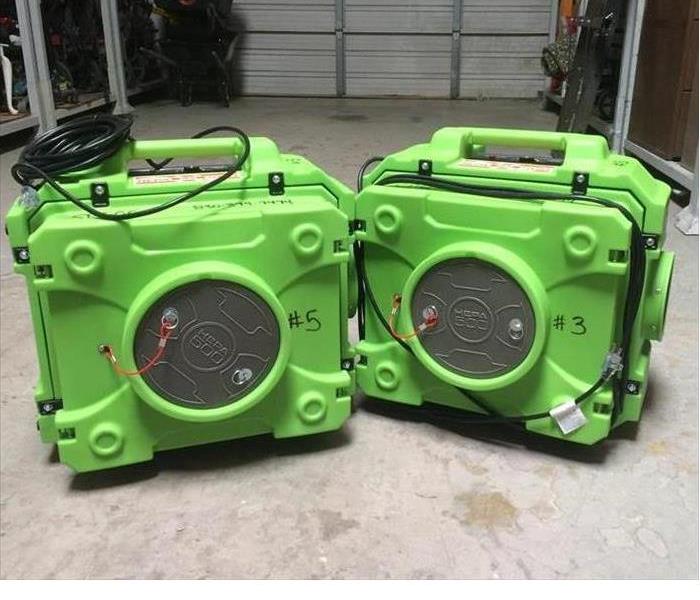What is an "Air Scrubber"?
12/14/2016 (Permalink)
We get this question a lot: "What is an air scrubber?"
We're happy to answer because we think they are phenomenal machines. They are simple, and they do their jobs very well.
An air scrubber is more appropriately referred to by professionals as an "air filtration device," or AFD. Simply put, it filters airborne particles out of the air, giving you cleaner air to breathe. The machines are used on many types of jobs, primarily mold remediation projects and water jobs where the use of fans can stir up dust and send particulate in the air.
"Scrubber" is a bit of a misnomer -- the machines don't really "scrub" anything. More appropriately, they trap airborne particulate in their filters, allowing filtered air to pass through the machine and re-enter the breathing environment. It's really the same concept as a water filter under your kitchen sink. A water filter removes unwanted particulate from your drinking water. An AFD does the same thing to the air we breathe.
The critical component of an air filtration device is a HEPA filter. The machine draws in air though the back side, pulls it through the HEPA filter, and the HEPA filter traps airborne particulate and returns to the breathing and varmints filtered air.
Do they work? Or are they just another way for contractors to run up a bill on a mold job or water job? AFDs absolutely work. A simple demonstration will prove it. All we would need to do is take two readings from a laser particle counter, which is a hand-held device that measures the number of particles per volume of air. We could take one measurement on the "dirty" side of the AFD (e.g. the side of the AFD in which the air is entering) to measure the number of particles in the general environment; then we could take another measurement at the "clean" side (e.g. the side where the newly filtered air is coming out of the machine). The measurements will show drastic differences in particle counts. The particle counts could be in the tens of thousands on the dirty side, and in the single digits on the clean side. Seeing this demonstration is believing that AFDs absolutely remove airborne particulate from the air you breathe.
As mentioned above, AFDs are used most frequently on mold remediation projects. The reason is simple -- we want to remove airborne mold spores from the air you are consuming. AFDs have many other uses as well. For example, they can be used on deodorization projects. Particulate in your air can produce odors. Trapping them with the HEPA-filtered AFD will remove them from the breathing environment and thereby remove the odor-producing elements from your environment.
Yes, AFDs can be expensive to employ. This is because HEPA filters are costly. HEPA filters are made of a refined product with tiny holes that are too small for particulate to pass through. These filters are "consumbables," meaning they are used and discarded. Unfortunately they cannot be recycled. This is the key cost driver to consider when using AFDs. On some occasions multiple HEPA filters may need to be used for each machine. More commonly, the HEPA filters can be used on a job without having to be changed out.
If you, or a loved one, or business associate have breathing or respiratory problems, give us a call at (305) 532-5411 and let us swing by and drop off an AFD -- cleaning your air (or more accurately stated, "removing particulate from your air") could go a long way to improving the way you feel!






 24/7 Emergency Service
24/7 Emergency Service
